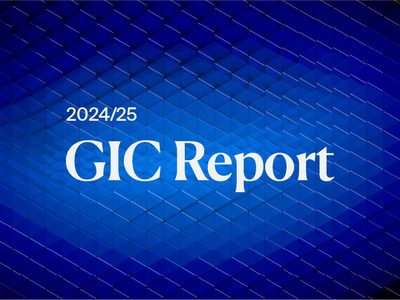In this article on “Transitioning to the New Reality”, find out more about the global macro outlook and key longer-term trends that GIC is watching, as shared by Jeffrey Jaensubhakij, GIC’s Group Chief Investment Officer, at the GIC Partnership Forum – Digital Dialogue 2021, in June 2021.
Introduction
As the world emerges from the deepest global recession since World War II, capital markets have already bounced back, boosted by the unprecedented speed and scale of policy intervention and the vaccine roll-out over recent months. However we are not in a global synchronized reopening yet, with countries in a race to get vaccinated and to reach some level of herd immunity. They are up against a virus that is changing, with damaging new variants, and a risk that the variants become resistant to current vaccines.
Today, the US, UK and Europe are sufficiently on the path towards full vaccination and have started to open up their economies and activity has recovered to close to 2019 levels in several markets. However, countries that previously kept the virus under control and did not prioritise vaccination, are now facing viral waves from new variants. As a result, more countries have tightened travel restrictions and social interactions and sped up their vaccination programmes. While we expect many to open up and resume economic recovery by end of the year, this may take even longer for some emerging countries such as India, Indonesia and Brazil, given their large populations and vaccination challenges. Ultimately, we will likely see periodic controls and shutdowns until more countries get fully vaccinated. Looking ahead, new variants, beyond the delta and gamma, are likely to emerge, and countries will have to learn to adapt, produce and consume in ways that will still allow economic activity to resume.
In terms of policy drivers, we also believe that fiscal stimulus has peaked globally, but a lot of the approved stimulus has yet to be spent. This together with rising business confidence, easy debt access and low interest rates, will drive the recovery in consumption and capex over the near term. Monetary policy has been signaled to remain accommodative by most developed market central banks. In contrast, China has chosen financial stability over additional stimulus, partly because activity has already risen back to pre-2020 levels. But as China slows its credit expansion, this will mean a cap on global commodities, and import volumes from other emerging markets, hence limiting the strength of recovery for some emerging economies.
Overall, we project a strong bounce in global growth in 2021, with the momentum stretching into 2022. After that we expect fairly low trendline growth, especially once the fiscal cliff is reached. This means constraints on supply and rising inflationary pressures over the next year or so. Central banks will need to decide between wanting to be credible on fighting inflation and providing monetary support for the recovery. We therefore expect greater volatility in the markets in the short term as expectations will pivot from too hot to too cold as far as monetary policies go.
Key trends to watch
As we transition to a post-pandemic world, we believe that there are six major trends which will drive markets, and lead to new challenges as well as new areas of growth.
Uncertainty of outcomes
The first is the uncertainty of outcomes following ten years of near zero or even negative policy rates. The prolonged period of historically low interest rates has resulted in elevated asset valuations. Unless growth is going to surprise significantly on the upside, which we think unlikely, it means that we now need to pay more for the same stream of cash flow over the next five to ten years. Hence, we expect lower returns from all risk assets going forward. Moreover, as history has shown that a return to more normalized conditions will more likely come from a sharp drop in valuations, rather than a long smooth growth into the valuation. High market volatility is definitely a risk that we have to think about when managing the portfolio.
Low rates and cheap borrowing have also driven up leverage ratios in government, household and corporate balance sheets, with global debt as a share of GDP at its highest on record. Any rise in interest rates will have an immediate and significant impact on most participants in the economy. Some will have levered in order to buy assets that are volatile in prices. Such excess leverage can create tremendous volatility in the financial markets and economy. Another issue is whether such prolonged low rates have resulted in a misallocation of capital in businesses and capex, the impact of which will have to be worked through over a period of time.
Rising asset valuations have also further worsened the inequality between those who have financial wealth and those who don’t. Wages have not kept up with inflation and nominal GDP, but wealth has grown substantially faster. Inequality is now driving politics and alignments, which could in turn impact regulatory policy and taxation.
This reliance on “lower for longer” interest rates, and the unintended consequences, will make monetary policy normalization very difficult especially when inflation has started to move up. We already saw glimpses of this in the markets in the recent weeks with just a mere signal that the Fed could move earlier.
Based on our asset class return projections, we see private equity, private credit, infrastructure and real estate, offering better risk-reward prospects versus traditional public market assets such as developed market equities, cash and nominal bonds. Being a long-term investor and able to take on liquidity risk and ride through market volatility, we remain focused on pursuing bottom-up private market opportunities and adding value to our partnerships and investments.
Policy politics
The next trend is policy politics. COVID-19 and the need for governments to step in, and step up, have opened the floodgates to huge fiscal spending that was unthinkable just a year ago. We have now seen modern monetary theory in practice as central banks have effectively monetized the fiscal spending. Once this mindset has started, it is very difficult to turn back. The fiscal genie is out of the bottle.
As mentioned earlier, politics and hence policy are also targeting inequality. Policymakers’ intention is to raise the bottom end of the income spectrum by running the economy as hot as possible, creating more jobs and labour shortages, and raising wages as a policy tool to balance out the inequality. In addition, this belief in efficacious big government means increasing pressure to regulate the things that voters feel have “gotten out of hand”. One key example is the great wealth and power associated with big tech, which has drawn considerable scrutiny in the US, China and Europe.
The role of government to boost the economy has extended to the development of specific industries. In the US, the policy of spending money to support 5G, semiconductor, advanced manufacturing, and quantum computing industries could be something that other countries may also push for. The question is how will this be financed? Is increasing debt possible over the long run without risk to higher bond yields or inflation? As a result, we are paying particular attention to inflation hedging assets, which include not only inflation linked bonds, gold and commodities, but also companies, businesses and real assets that can provide some protection against inflation. Real estate and infrastructure assets, for example, can often benefit from inflation-matching rental increases and yields.
Geopolitics
Third is the growing significance of geopolitics on the asset markets. The intensifying rivalry between the major powers, whether in terms of military capability, strategic industries, and even soft power, is playing out in multiple ways, including trade war, investment restrictions, and the move to diversify supply chains to increase self-sufficiency in critical products. One case in point is China’s focus on dual circulation to increase its economic reliance on domestic demand. What this means is that there will be targeted spending and increased regulation and empowerment by the government for certain industries, and some businesses will benefit greatly from this. So while this creates opportunities given where reshoring and concentrated spending does take place, the downside is that other countries get pulled into great powers competition and is asked to by “take sides”, resulting in the creation of spheres of ‘Allied’ country groupings rather than globalization.
Technology
The fourth trend is technology. The global lockdowns created by COVID-19 has made it clear that the world needed to find ways to communicate, work, access goods and services, and operate smoothly from home, or from different locations and geographies. This has resulted in the acceleration digitalization and technology adoption by companies, but also migration of computing to the cloud. Spending on digital transformation can only be expected to increase. Enterprise technology has been a key focus for GIC’s technology investment group in the last few years. As we seek to invest in companies that are benefiting from this adoption trend, there will be winners and losers amongst companies, as well as amongst countries who are competing on education and human capital in technology.
Sustainability
Fifth, sustainability and climate change are inevitable issues that have to be dealt with. The balance of scientific opinion has indicated it is already too late to control the rise in temperatures to one and a half degrees. Governments will have to respond by imposing regulations and taxes, while businesses will be forced to spend in order to make their assets and processes climate change resilient and risk compliant. The key question is who pays for this cost, and who will be the winners and losers. For GIC, our approach is to understand, assess and mitigate the impact on our portfolios, identify the technologies and services that will be needed to manage the transition, engage with our investee companies and partners to support them in their sustainability efforts, and seek to play a meaningful role in these adjustments.
Healthcare
The final trend pertains to health care. This pandemic has clearly demonstrated the need to have access to good healthcare and resilient public health systems. The issue is what type and quantum of spending will be needed to be put this in place over the long term. We know that many technologies, which were developed over the last 10 years, particularly in gene sequencing, are now leading to therapies that are more targeted and cost effective. At the same time, demographic trends will continue to drive the need for increasing healthcare spend, but this may have to be at the expense of other public spending items. Hence, we need to understand what is affordable, and what changes do healthcare business models, systems and processes, need to undertake to increase overall cost effectiveness? Which profit pools need to be squeezed in order to make this affordable and accessible?
Conclusion
These six trends are just some of the areas that GIC has been focusing on given their impact on both the macro and micro environment. Hence despite the short-term recovery in global activity, the transition towards an uncharted post pandemic reality will mean continued uncertainty and periodic volatility in the capital markets, and divergences in longer-term outcomes across markets, sectors and businesses. We look forward to engaging more with our partners and investee companies to find meaningful ways to invest and add value, and navigate through these challenging times.
Please click on “Save As PDF” to read the full article.






